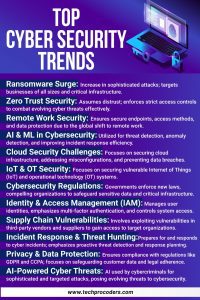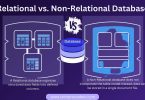Businesses of all sizes, enterprises, organizations and governmental bodies depend increasingly on computerized systems to make it easier for them to carry out their daily tasks during the ongoing digital revolution.
Protecting data from internet threats and unauthorized access has become a top priority for considerable organizations. Data breaches, ransomware and hacking incidents are growing more frequent, therefore the ongoing development of technology calls for improvements in cybersecurity measures.
Rising Cyber Risks in Auto Vehicles:
Modern cars are equipped with automated software that guarantees seamless performance in areas like engine control, safety systems, and driver assistance features in the connected vehicle generation. These Bluetooth and Wi-Fi-connected vehicles have security holes that might be exploited by hackers. In particular, as autonomous cars gain popularity, 2023 is expected to see an increase in activities like using vehicle microphones for unauthorized control and listening in on conversations. Self-driving car complexity requires strong cybersecurity protections.
Using Artificial Intelligence (AI) to Its Full Potential:
Machine learning and artificial intelligence have significantly enhanced cybersecurity across numerous industries. Natural language processing, facial recognition, and autonomous threat detection are all made possible as a result of AI. AI also creates complex viruses and attacks capable of avoiding the most recent data safety regulations. Systems that use AI to detect threats have the ability to anticipate new attacks and rapidly notify administrators of potential data breaches.
Mobile Devices Are the Primary Attraction for Hackers:
Mobile devices have become top targets for hackers as a result of the 50 percent increase in mobile banking malware and attacks seen in 2019. Emails, communications, financial transactions and private photographs all become risky. 2023 will see advancements in cybersecurity that will tackle the problems brought on by malware and smartphone viruses.
Cloud Vulnerabilities Need to Be Addressed:
When more businesses use cloud computing, it becomes clear that security procedures need to be regularly reviewed and improved to prevent data breaches. Even while Google and Microsoft’s cloud systems have strong security measures in place, the prospect of user error, harmful viruses, and phishing assaults still poses a significant risk to users.

Emerging Issues: Challenges Arising from IoT in a 5G World.
With the introduction of 5G networks, the Internet of Things (IoT) enters in an age of connection. However, as a result of their greater connectivity, devices are now more vulnerable to outside influences, possible threats and undiscovered software bugs. Even well-known products, like Google’s Chrome browser, have experienced serious flaws. Given that 5G technology is still in its early stages, a thorough examination is necessary to find and fix security flaws, necessitating the rigorous design of software as well as hardware components.
Automation and Integration Working Together:
Automation plays a key role in managing complicated data when data quantities increase. Automation becomes a priceless advantage as experts and engineers deal with increasing pressure to provide quick and efficient solutions. Creating secure software in a variety of contexts requires integrating security controls into the agile development process. The increased security problems posed by complex web applications highlight the value of placing automation and cybersecurity concepts at the center of the software development lifecycle.
Ransomware with a Specific Threat: Targeted.
Targeted ransomware is one urgent cybersecurity problem. Specialized software is essential for industry processes, particularly in industrialized nations. This focused strategy is highlighted by attacks like WannaCry, which targeted NHS hospitals in England and Scotland. Ransomware not only targets smaller organizations and even entire countries but also demands payment to prevent data exposure.
Cyberwarfare Supported by the Government:
Western and Eastern powers continue to compete aggressively. As seen by the battles between US, Iranian, and Chinese hackers, sporadic but significant cyberattacks have an impact on elections and international relations. This year’s various elections will likely lead to an increase in illegal activity. Cyber issues in 2023 will include high-profile hacks and the release of private data.
Internal Threats: Human Errors in Cybersecurity.
Data breaches have been triggered by human faults. A small error may lead a company to fail and cause data loss costing millions of dollars. According to Verizon’s cybersecurity research, 34% of breaches are caused by employees. Data security must be emphasized to the staff.
In Summary:
Improved security measures are necessary for 2023. Over $100 billion in estimated global spending highlights its importance across industries. Investing in cybersecurity education today develops knowledgeable professionals for the future. Professionals with expertise in cybersecurity fetch high salaries in the IT industry.







